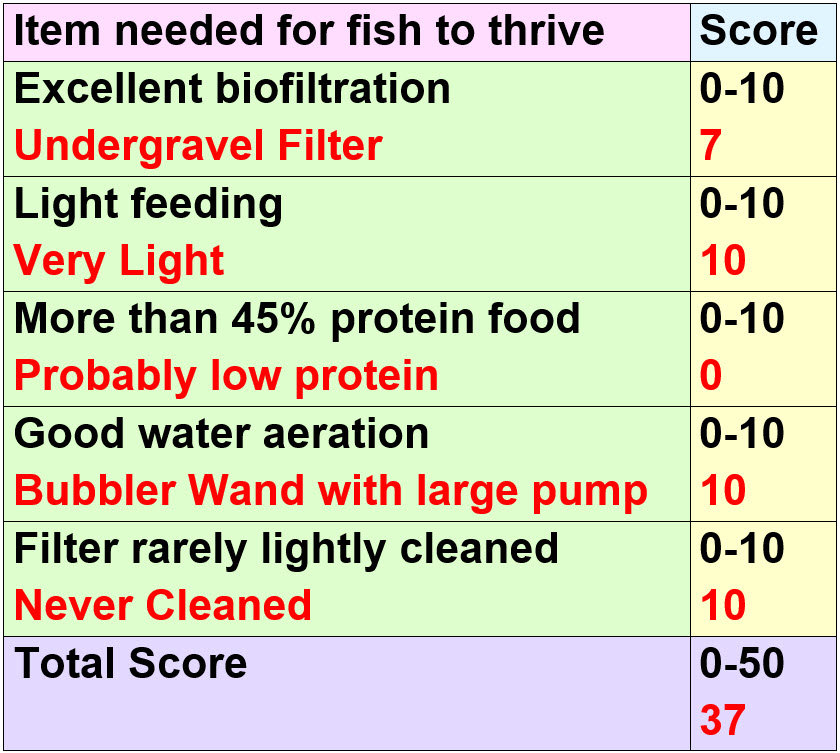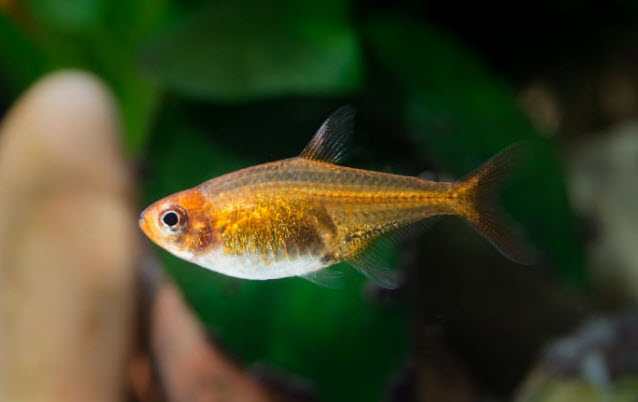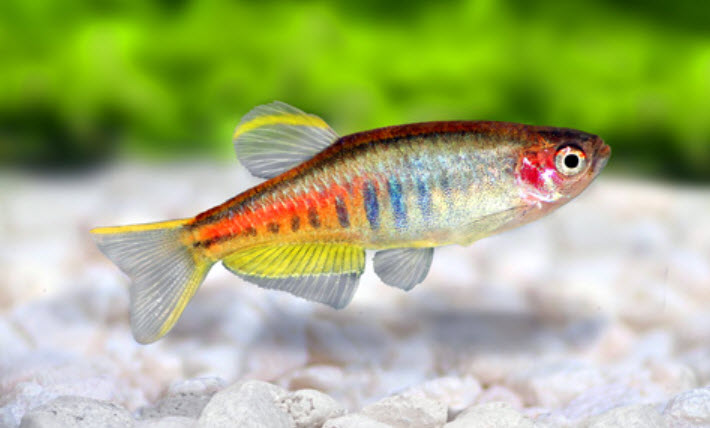
So let’s look at a typical beginner hobbyist’s first aquarium and score it by the five criteria in the previous article. 1.1.12. How to Make Fish Thrive

This beginner has a community aquarium with angelfish, blue gouramis, swords, platys, corys, neons, and zebra danios. If this beginner uses a reasonable break-in period for their aquarium they are going to do well.
I use this illustration because that was what I did with my first aquarium, many, many aquariums ago (and more than fifty years ago!). I added a few of the fish when I set up the aquarium and had the water turn a milky green at about two weeks. At roughly four weeks the water suddenly turned crystal clear.
I didn’t do water changes (something which would have prolonged the cloudy water) because at that time the mantra was “old water is good water”.
By dumb luck, I only added the rest of the fish gradually (I had trouble deciding on what to add).
I did lose all the neons. Most “newbies” get neons for their first tank because they are so beautiful and so cheap. And most of the time the neons die. They are not beginner fish.

I was lucky. I fed the fish lightly and I bought an air lift under-gravel filter, both very good things to do. I also had bubblers in the under-gravel, a bubble wall, and a double pump giving me very good aeration. I did have an ich outbreak which I successfully treated with what I know now to be an ineffective medication. More dumb luck. News flash, most beginners are just this lucky. Mother Nature is very forgiving.
Water Changes
Many say that the key to keeping fish is water changes. For the first fifteen years I was in the hobby the mantra was “old water is good water” and one didn’t do water changes.
I had many aquariums successfully for many years with no water changes being made at all (“ignorance is bliss”?). The fish sure seemed healthy. I’ve run into many hobbyists that don’t do water changes and their fish are doing just fine. One hobbyist has kept fish for fifty years with no water changes and continues to do so.
Water changes are supposedly required to keep “poisonous” nitrate below 40 ppm. When this fifty-year hobbyist measured his nitrates, it was over 900 (he used a dilution technique to measure). Go figure? This is an illustration of how forgiving this hobby is.

Cycling
Many say you can’t be successful with your aquarium in a new setup unless you do something called “cycling” and they emphasize you must know about something called the “nitrogen cycle”, study it and understand it completely before you even set up your first aquarium. Again, this simply isn’t true. I spent many years oblivious to what cycling or the nitrogen cycle even are. My aquariums simply cycled themselves without help from me.
Many experienced hobbyists don’t do “cycling” of a new aquarium. They just set the aquarium up, add some fish and go. They don’t over-feed and they don’t add too many fish at once. And they do just fine. If you post this on social media the avalanches of protests from well meaning but ill-informed commentators will overwhelm you. But it is true! This is just more evidence of how forgiving this hobby is.
Return to Guidelines for Beginners Menu
.
Aquarium Science Website
The chapters shown below or on the right side in maroon lead to close to 400 articles on all aspects of keeping a freshwater aquarium. These articles have NO links to profit-making sites and are thus unbiased in their recommendations, unlike all the for-profit sites you will find with Google. Bookmark and browse!
.

Leave a Reply